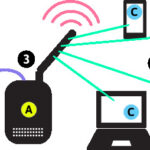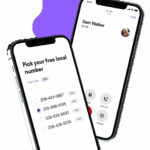The T-Mobile short code 128 is an internal system code used by T-Mobile’s network to log specific behind-the-scenes activities on your account, and it is not a conversation starter or a cause for alarm.
If you see an entry for “T-Mobile text 128” on your detailed usage history, it means a background notification, usually related to voicemail or linked device syncing (like an Apple Watch or tablet), was processed by your line. Unlike most other short codes (which are for alerts, polls, or two-factor authentication), you cannot send a message to 128, nor can you reply “STOP” to it. This article will explain the primary functions of this mysterious short code and confirm why you can safely ignore it.

The Truth About the T-Mobile Short Code 128
When most customers see a short code on their bill, they assume it’s a standard text message from a business or a service. However, the 128 short code operates differently; it’s a network-level placeholder.
- It’s a System Code, Not a Text Message
The short code 128 is a carrier-delivered internal logging code exclusively used within the T-Mobile network. It’s often classified as a five-digit short code (though sometimes appears simply as “128”).
- Internal Note: Think of it as a receipt or a timestamp the network records to track certain events, particularly those related to messaging services and device features.
- Billing Appearance: It appears in your detailed usage log as a received (incoming) text message, even if nothing shows up in your phone’s messaging app.
- Cannot Be Blocked/Replied To: Since it is a network function and not a standard promotional service, replying to it or trying to block it with “STOP” is ineffective.
- Common Triggers for the “128” Code
Based on customer reports and carrier clarifications, the 128 short code is predominantly associated with two common, everyday actions that require network-level confirmation:
Voicemail Notifications
The most frequent trigger for seeing the 128 short code is related to your voicemail. When you receive a voicemail, your device needs to be notified by the network. This notification generates a system event that T-Mobile may log as an incoming text from 128.
- Receiving Voicemail: A log entry for 128 is often created the moment a new voicemail is left.
- Checking Voicemail: Calling your voicemail box to retrieve messages can also sometimes generate a 128 entry in the usage logs.
- Visual Voicemail Updates: In the past, T-Mobile has also sent explicit system update alerts regarding its Visual Voicemail application from the 128 code.
Device Synchronization (Connected Devices)
The 128 short code often appears on lines that have multiple devices associated with them, such as Apple’s ecosystem devices.
- Apple Watches or Tablets: If you have a cellular-enabled Apple Watch, iPad, or another tablet linked to your primary phone number, the incoming traffic or background synchronization required to keep those devices updated can be logged as an incoming text from 128.
- Place Holder for Communication: For data-only or tablet lines, a representative may explain that the code acts as a placeholder for non-cell-phone messaging, such as iMessages sent from an iPad or MacBook.
T-Mobile Self-Service Short Codes (The Ones You CAN Use)
While 128 is a passive, non-interactive system code, T-Mobile offers many useful Self-Service Short Codes that you can dial (not text) to get immediate account information.
To use these codes, open your phone’s dialer, enter the code, and press the Call/Send button.
| Short Code (Dial) | Numeric Equivalent | Purpose |
| #BAL# | #225# | Check account balance and last payment received. |
| #WEB# | #932# | Check data used, data plan details, and expiration date. |
| #MSG# | #674# | Check message usage for the current billing cycle. |
| #NUM# | #686# | Display your own phone number on the screen. |
| #MIN# | #646# | Check voice minute usage. |
| #ONB# | #662# | Turn on Scam Block (Highly Recommended). |
Security: Is T-Mobile Text 128 a Scam?
The short code 128 is a legitimate, internal T-Mobile number and is not a scam.
The messages, or the log entries, associated with 128 are generally benign and are simply a reflection of the network performing its function. However, general vigilance against text message scams is always recommended.
Do not trust any text message, regardless of the sender, if it asks you to:
- Click a suspicious or unfamiliar link to “verify” your T-Mobile account.
- Provide sensitive personal information (passwords, Social Security Number, bank details).
- Claim a prize you never entered for.
If you receive a suspicious message from any number, you should forward the entire text message to T-Mobile’s anti-spam short code, 7726 (SPAM), for investigation.
Frequently Asked Questions (FAQ)
Can I text T-Mobile short code 128 to stop messages?
No, you cannot. Since the 128 short code is an internal network logging function and not a subscription service or a monitored communication channel, replying “STOP,” “END,” or any other command will not work. To stop incoming messages from 128, you would need to disable the related features (like Visual Voicemail notifications), which may affect essential service functions.
Why did I get a “128 text” if I don’t use Visual Voicemail?
Even if you do not actively use T-Mobile’s Visual Voicemail app, your line still has voicemail services provisioned on the network. The 128 text entry likely appears in your detailed usage logs (your bill) as a system acknowledgement of a voicemail notification, whether or not a user-facing text message was delivered.
Do I get charged for the T-Mobile text 128 entry on my bill?
No. The T-Mobile short code 128 entries are logs of system activity and are typically not billed as chargeable text messages. They are included in your line’s usage history for informational purposes, but since T-Mobile plans generally include unlimited texting, these non-chargeable system events should not result in any additional fees.
Is T-Mobile’s 456 short code different from 128?
Yes. T-Mobile uses many official short codes. The code 456 is specifically used for customer-facing T-Mobile Alerts and Campaigns (marketing, network status, or general account information). The code 128 is used for behind-the-scenes system activity, most often related to device synchronization and voicemail.
Conclusion
The T-Mobile text 128 is an internal system code that appears in your usage logs to track essential background functions like voicemail notifications and linked device synchronization. It is a legitimate T-Mobile code, not a text you can reply to or a message that charges you money. If you see it on your bill, you should consider it harmless technical jargon that confirms your core network services are working as intended.


